Recent Posts
Safeguarding Your Business With Our Help | SERVPRO of Downtown Las Vegas
2/21/2024 (Permalink)
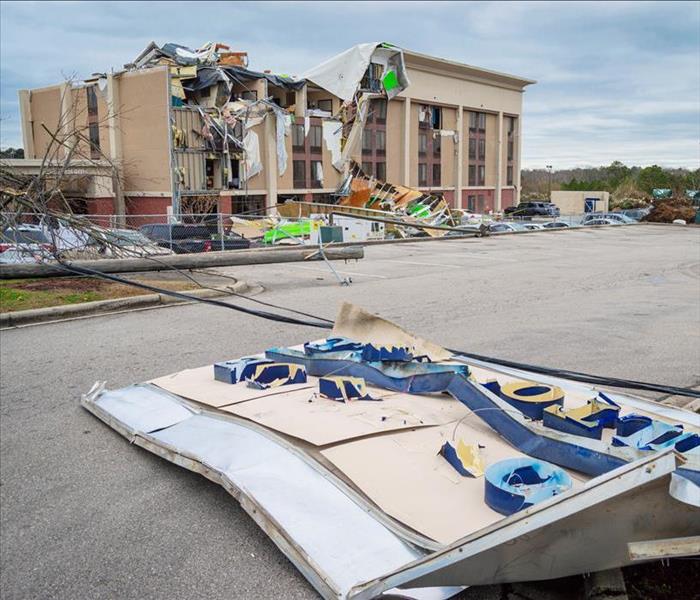 When disaster strikes your building it can feel extremely overwhelming. That's why SERVPRO of Downtown Las Vegas is here for the rescue. Call us now!
When disaster strikes your building it can feel extremely overwhelming. That's why SERVPRO of Downtown Las Vegas is here for the rescue. Call us now!
Our downtown area is world-renowned for all of the arts, entertainment, fun and delicious food, and we have our wonderful businesses to thank for that.
Every business from the very end of the Strip to Fremont Street offers an important service and is a vital part of our community. That’s why we want to return the favor and help ensure your business is as successful as possible.
We proudly offer our restoration and cleaning services to all of the businesses in the downtown area. We explain more about each of our services below, so check it out to learn more about how we can help you.
Large Restoration Projects
Disaster can strike your business at any time and can have a huge impact on a large number of people. A fire on one level of your hotel could displace thousands of people, a kitchen fire at the back of your restaurant could turn dozens of hungry people out on the street or even a simple busted water line could impact your ability to serve people in a timely manner.
In any case, a fast recovery and restoration is crucial to ensure the safety and comfort of your guests. Our large-loss recovery team is up to the task!
We understand the time-sensitive nature of these situations, and we will get right to work cleaning, restoring and sanitizing your space. We have helped hotels, restaurants, casinos, local gift shops and entertainment venues, so we are well-versed in all of the different businesses in our community.
Keeping It Clean
When you are in the public service industry, you know that presentation matters. The public is constantly flowing in and out of your building and sometimes you only get one shot at a good first impression. This is why having a clean space is crucial! You don’t want your patrons to be focused on your dirty carpets or dusty vents because that takes away from the experience.
Let us handle these cleaning duties for you so you can focus on other aspects of your business. We are trained to handle everything from deep carpet cleanings to odor removal and everything in between.
Our goal is to help keep your business clean and sparkling so your guests will want to come back to your place time and time again.
Our team is always here for you no matter what kind of restoration and cleaning assistance you may need. Give us a call today
Tips for Staying Dry When It Rains | SERVPRO of Downtown Las Vegas
11/21/2023 (Permalink)
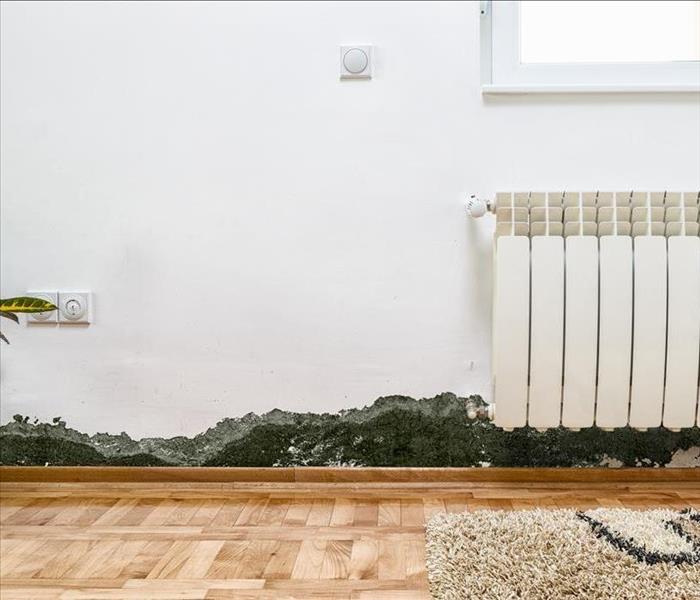 Are you left dealing with the aftermath of water damage to your business? SERVPRO of Downtown Las Vegas is here to help. Call us today!
Are you left dealing with the aftermath of water damage to your business? SERVPRO of Downtown Las Vegas is here to help. Call us today!
The rain can fall fast and furious around here when it does come down. While we may not see the number of rainy days that the rest of the country does, each rainstorm we get can cause significant issues for our community.
In addition to flash floods and slick roads, water damage is a common occurrence because many of us aren’t prepared for the incoming weather!
Knowing what to do to get your home or business ready as soon as a storm is in the forecast can help you avoid serious water damage issues.
Preparing Your Space
If you have a large outdoor area on your property or you own a business that has a large outdoor seating and entertainment area, consider shutting it down early and getting it ready for the elements. Pull cushions inside, tie down tables and chairs and get anything inside that is fragile and could be damaged by the rain.
You should also make sure that your gutter system, downspouts and rain chains are set up and ready to go. If the rain does start falling faster than you anticipated, you need to be able to rely on your gutter system to carry the water down and away from your property in an efficient manner.
Any clogs or blockages can lead to water pouring over the side of your building that will settle down into your foundation, and perhaps, your basement.
Securing Your Property
If you have the time to check your roof for structural issues, grab a ladder and do some investigating. Oftentimes water damage occurs solely because there was some sort of unaddressed home damage that was already there. Look for broken shingles or any obvious gaps or cracks that could let rain inside.
If you are a business owner, consider adjusting any of your plans if you have any activities or events happening in the lower levels or basement of your building. You should also consider rebooking any guests who have rooms on the lowest level to higher ones just to be on the safe side. Flooded basements and rain leaking down the wall is not a good look for anyone, even if it is not your fault.
Where We Come In
Rain has a mind of its own and can cause widespread water damage immediately. If you discover significant water damage in your home or business after the storm passes, give us a call right away. We are trained to dry out your home quickly and address repairs just as fast.
We know that the longer standing water sits on your property, long-term structural issues and mold infestations become more likely. Our restoration team will be able to handle every aspect of your recovery from the initial water extraction to the final drywall and carpet repairs. We will have your space back to normal in no time at all.
Water damage should always be cleaned up quickly. Contact SERVPRO of Downtown Las Vegas for immediate assistance
Preventing a Fire at Your Business | SERVPRO of Downtown Downtown Las Vegas
6/22/2023 (Permalink)
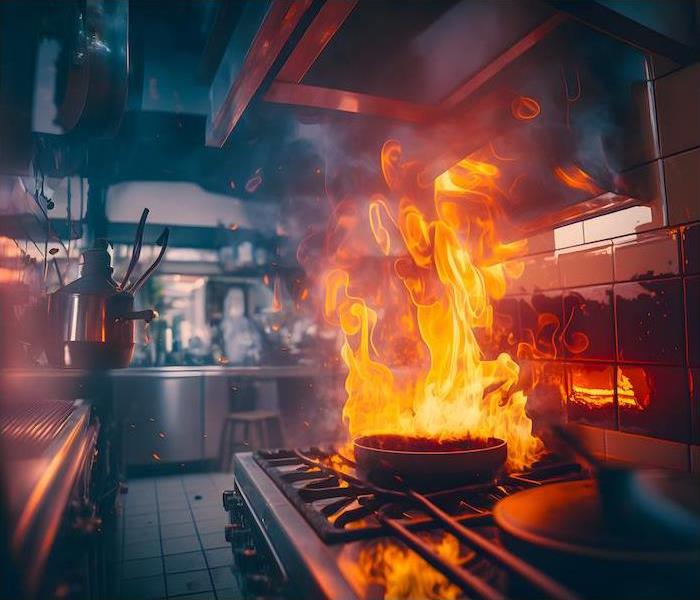 Has your home or business been affected by a fire? Call SERVPRO of Downtown Las Vegas to restore your space.
Has your home or business been affected by a fire? Call SERVPRO of Downtown Las Vegas to restore your space.
Life can get pretty busy as a business owner in Downtown Las Vegas! Since it seems like the city never sleeps, it can be easy to get caught up in the tasks and jobs you need to do to keep your restaurant or establishment running without taking extra precautions to prevent disaster.
However, all it takes is one simple accident to lead to a serious situation. Fires are a common threat to business owners, and they can cause significant damage in a short amount of time. By taking these daily precautions, you can reduce your risk and stay open for business.
Keep It Clean
We are sure that you have a proper opening and closing cleaning checklist that your staff follow, but be sure they are wiping down your equipment thoroughly after each day. Grease can quickly build up on the edges of fryers, cooktops and hoods, leading to a serious situation. In addition, you should have your hoods and ducts cleaned professionally to ensure that any buildup is removed and your exhaust can exit in a safe manner.
You should also be smart about the positioning of your cooking equipment! Try to keep your fryers at least a foot away from any flame–producing equipment, as a single spark could ignite the hot oil and start a massive fire. Every commercial kitchen needs to have a fire extinguisher, so ensure your staff knows where it is and how to use it.
Plan to React
While you can do your best to prevent a fire from occurring, it might not always be possible. In these cases, you need to have a backup plan in place that will quickly snuff out any flames. A working sprinkler system can snuff out a fire in seconds and can easily be installed throughout your place of business.
There are also fire-suppression systems on the market that are really helpful back in the kitchen where grease and oil are being used often. These systems work similarly to a sprinkler system, but chemicals are sprayed out of them instead of water. These chemicals are designed to stop tricky fires like grease fires from spreading.
What to Do After a Fire
Even if you take all the precautions and set up everything so you can react quickly, fires are naturally unpredictable. As soon as the flames are out, pick up the phone and call SERVPRO® of Downtown Las Vegas! We are trained in large loss recovery and commercial property damage and we can work alongside you to ensure a fast recovery.
We know that every minute you are closed can be detrimental to your business, so we focus our efforts on quick and efficient work. When we are through, you would never know your business suffered such an intense disaster!
Are you dealing with fire damage to your commercial property? SERVPRO of Downtown Las Vegas can help.
How to Safely Enter and Inspect a Building After a Storm
6/21/2023 (Permalink)
After a storm disaster, it is crucial to approach building inspection with utmost caution and prioritize safety. Whether it's a hurricane, tornado, or severe thunderstorm, the aftermath can leave buildings damaged and potentially hazardous. As disaster restoration experts, we understand the importance of a thorough assessment while ensuring the well-being of everyone involved. In this blog, we will provide you with a step-by-step guide on how to safely enter and inspect a building after a storm disaster.
Step 1: Assess the Surroundings
Before entering the building, carefully evaluate the surroundings for any visible hazards. Look for downed power lines, unstable structures, leaning trees, or other objects that could pose a risk. Keep a safe distance from these hazards and report them to the appropriate authorities or utility companies if necessary.
Step 2: Ensure Personal Protective Equipment (PPE)
Wearing appropriate personal protective equipment (PPE) is essential to safeguard yourself during the inspection. Prior to entering the building, ensure you have the following PPE:
- a) Hard hat: Protects your head from falling debris or objects.
- b) Safety goggles: Shield your eyes from dust, debris, and potential chemical exposure.
- c) Gloves: Provide hand protection and enhance grip while handling objects.
- d) Dust mask or respirator: Guard against inhaling harmful particles, mold spores, or other contaminants.
Step 3: Turn Off Utilities
Before entering the building, it is crucial to turn off all utilities, including electricity, gas, and water. Damaged electrical systems or leaking gas pipes can pose significant risks. If you're unsure how to shut off utilities, consult with professionals or contact the respective service providers for guidance.
Step 4: Proceed with Caution
Enter the building cautiously, paying close attention to your surroundings. Watch out for weakened structures, sagging ceilings, or unstable floors. Take each step slowly and carefully, using handrails if available. Avoid damaged areas or rooms with visible signs of structural instability.
Step 5: Assess Structural Damage
Once inside, begin the inspection by assessing the structural damage. Look for cracks in walls, ceilings, or foundations. Pay attention to any noticeable shifts or tilts in the building. If you suspect severe structural damage, it is best to evacuate immediately and seek professional assistance.
Step 6: Check for Water Damage
Water damage is a common consequence of storm disasters. Look for signs of water intrusion, such as stains on walls or ceilings, soggy or warped flooring, or a musty odor indicating mold growth. Waterlogged materials should be addressed promptly to prevent further damage and mold infestation.
Step 7: Document the Damage
Take photographs or videos of the damage to document the conditions for insurance claims and restoration purposes. Capture both wide-angle shots and close-ups to provide a comprehensive record. Make detailed notes about the extent of the damage in each area, including specific areas of concern.
Step 8: Exercise Caution with Hazardous Materials
Be mindful of potentially hazardous materials that might have been displaced or exposed during the storm. These could include asbestos, lead-based paint, or chemicals from household or industrial sources. Avoid direct contact and seek professional assistance if you suspect the presence of hazardous materials.
Step 9: Evaluate Electrical Systems
If the electricity has been turned off, avoid turning it back on until a qualified electrician has inspected and certified the safety of the electrical system. Damaged electrical wiring can cause fires or electrical shocks, posing a serious risk.
Safely entering and inspecting a building after a storm disaster requires careful planning, attention to detail, and prioritizing personal safety. By following this step-by-step guide, you can safely conduct a thorough assessment.
The High Cost of Mold Damage: Understanding the Financial Impact
5/8/2023 (Permalink)
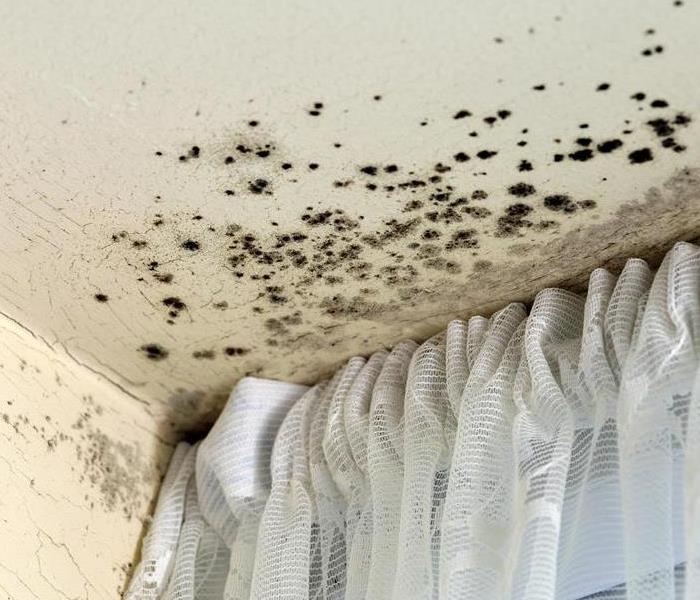 Mold can be expensive, give the professionals a call for your mold remediation.
Mold can be expensive, give the professionals a call for your mold remediation.
Molds are fungi, which are microscopic organisms that live on dead organic matter. They can be found in soil, plants, and even your own home.
Mold is a type of fungus that grows in damp places like bathrooms or basements. It feeds on organic matter such as wood or paper products and can cause allergic reactions in people who are sensitive to it.
The most common types of mold include:
Black mold (also known as Stachybotrys chartarum). This type of mold looks like dark greenish-black fuzz growing on surfaces such as walls or ceilings in your home; it may also appear as black spots on clothes left in damp areas like laundry rooms; if you have this type of mold growing in your house then you should contact an expert right away because it could cause health problems if inhaled over time.
What Causes Mold?
Mold is a type of fungus that grows in damp environments. It can be harmful to people, animals and buildings if it's allowed to grow unchecked. Mold spores are everywhere, but they won't grow unless they have access to moisture, oxygen and food sources like wood or paper.
Mold can grow on almost any surface where there's enough water damage, from the walls in your bathroom to the ceiling in your attic but it thrives most easily when there's been flooding or other major water leaks (like burst pipes).
If you notice mold growing anywhere in your home or office building after a flood has occurred, it's important not only for safety reasons but also because of how much damage it can cause.
Signs of Mold in the Home
Here are the most common signs of mold in the home:
Musty smell. If you notice a musty odor, it could be an indication that you have a moisture problem and are at risk for mold growth.
Discolored walls or ceilings. If your wall paint looks faded or discolored, this may be due to mold growth on the surface of your walls or ceiling boards.
Visible mold growth in places like showers and sinks where water has been sitting for long periods of time (for example, if there's been an overflow).
Financial Impact
Financially, mold can be costly. Hiring a professional in mold remediation can help remediate and ensure your property is safe from mold damage. Mold inspections should also be done regularly by someone who knows what they're looking for a professional inspector will know how much damage has been done and whether or not it needs immediate attention before it gets worse!
If you have mold in your home, it's important to take the right precautions and contact a professional. Mold can be dangerous if not treated properly, so make sure you know how much it will cost to get rid of the problem before proceeding.
5 Essential Steps to Create an Effective Office Fire Escape Plan
4/11/2023 (Permalink)
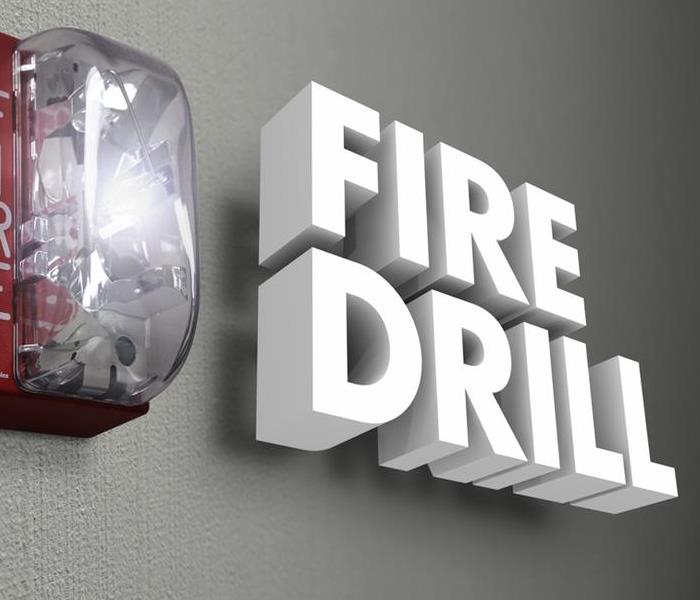 Have an fire escape plan is essential for safety for everyone.
Have an fire escape plan is essential for safety for everyone.
An office fire can be a terrifying and life-threatening experience. That's why it's crucial to have a well-prepared office fire escape plan in place. A fire escape plan outlines the necessary steps to follow in the event of a fire, allowing you and your colleagues to evacuate the building safely and quickly. In this article, we'll guide you through the essential steps to creating an office fire escape plan.
Understand the building's layout
The first step in creating an effective fire escape plan is to understand the building's layout. You should know the location of all the exits, emergency staircases, and fire escapes. Knowing where these exits are located will help you determine the best escape routes during an emergency.
Assign Roles and Responsibilities
Next, you need to assign roles and responsibilities to the members of your team. Decide who will be responsible for calling the fire department, who will assist people with disabilities or mobility issues, who will shut off the electricity or gas, and who will make sure that everyone is accounted for.
Determine Escape Routes
Identify the quickest and safest escape routes from each area of the building. There should be at least two escape routes from each room in case one is blocked. Mark these escape routes clearly and make sure everyone knows where they are.
Communicate the Plan
Once the plan is created, it's essential to communicate it to everyone in the office. Hold a meeting or training session to explain the plan and answer any questions. Post the plan in visible locations throughout the office, such as near exits and in common areas. Regularly remind everyone of the plan and conduct regular fire drills.
Review and Update the Plan
Finally, regularly review and update your fire escape plan. Check if any changes have been made to the building, such as new exits or construction. Make sure that all emergency equipment, such as fire extinguishers and smoke detectors, are in working order. Review the roles and responsibilities of each team member and ensure everyone is familiar with the plan.
In conclusion, creating an office fire escape plan is essential for ensuring the safety of everyone in the building. By understanding the building's layout, assigning roles and responsibilities, determining escape routes, communicating the plan, and regularly reviewing and updating the plan, you can be confident that your team is prepared in case of an emergency. Remember, it's better to be safe than sorry, and creating a fire escape plan is an important step in keeping your team safe.
Water Damage can occur during Construction
3/7/2023 (Permalink)
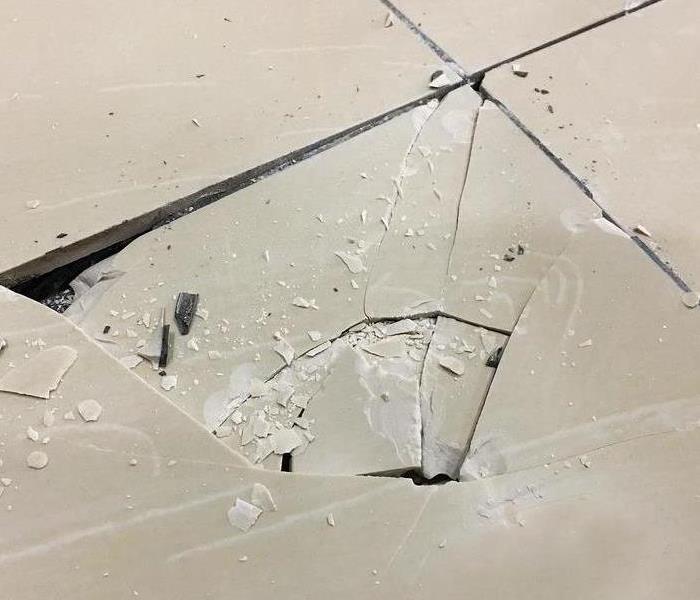 Cracked tile during reconstruction can cause water damage on the sub flooring.
Cracked tile during reconstruction can cause water damage on the sub flooring.
Construction projects often bring with them the potential for water damage. If you are planning a construction project, there are steps you can take to prevent damage from happening.
Replace or upgrade your water lines
Water pipes are an essential part of any home, but they tend to get old as time goes on. If you have an older home and notice that some of your water lines are corroded or leaking, it's best to replace them before any major damage occurs. Even if you don't notice any leaks or corrosion right now, it's still a good idea to upgrade the piping in your house so that there isn't any risk of future problems with leaking or corrosion when you least expect it.
If one pipe started leaking today, other pipes may start leaking soon after due to stress from overburdened pressure from higher levels of usage in multiple areas around town (like hot summer days). This could result in serious consequences like flooding which could cause property damage throughout homes built near rivers/streams/lakes etc.
Replace natural gas-powered appliances with electric ones
Natural gas is a fossil fuel and a greenhouse gas. It can leak into the air, where it causes health problems and contributes to global warming. Electric appliances are safer because they don't use any fossil fuels, so you won't have to worry about any of these issues with them.
Use a dehumidifier to prevent mold
A dehumidifier is a device that removes moisture from the air. It can be used to prevent mold and mildew in basements, crawl spaces and other areas prone to water damage.
Mold is one of the most common types of indoor air quality issues that homeowners face today because mold spores are microscopic fungal organisms that grow on wet materials such as wood paneling or carpeting if not properly taken care of by removing moisture from these surfaces before they become infested with spores.
Prevent leaks by insulating pipes and updating your thermostat
Insulate pipes and water heaters. Pipes can be insulated by wrapping them in an insulating blanket or using foam pipe insulation. This will help prevent the loss of heat through the walls, floors, and ceilings during winter months.
Update your thermostat. If you have an older model that doesn't automatically adjust itself based on temperature changes in your home, consider replacing it with one that does so you can have more control over how much energy is used to keep things warm or cool throughout the year. Use timers when away from home: Set up automatic timers for lights and appliances such as washing machines so they don't run when no one's around.
Water damage can be prevented
Water damage can be prevented by taking the proper precautions and using the right tools. Water damage can be expensive to repair. Water damage can happen for a variety of reasons, a pipe may burst in your home or office, or you might accidentally leave a faucet running all day long. If you have an overflowing toilet or scalding hot water running through your kitchen sink pipes, this could cause serious problems for both structural integrity as well as electrical wiring throughout your home or business premises.
Take precautions to help reduce water damage to your property during reconstruction. SERVPRO has the experience and expertise to help upgrade your home preventing water damage during a remodel.
Understanding Smoke Damage
2/7/2023 (Permalink)
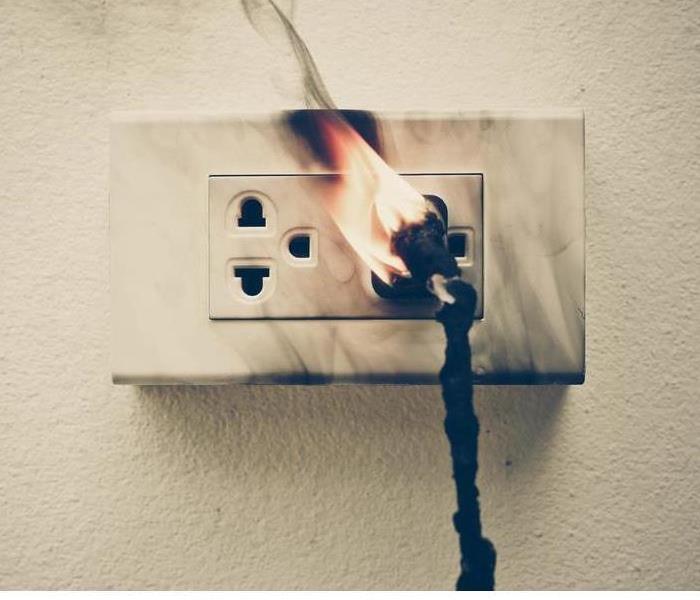 When your home suffers from smoke damage, give the professionals a call today!
When your home suffers from smoke damage, give the professionals a call today!
Smoke damage is one of the most challenging forms of damage you may have to deal with. The heat, odor, and soot residues that come from a fire are complicated in their makeup and difficult to handle. Different types of smoke will produce different types of damage. This type of damage needs special attention, both in terms of cleaning up the source of the problem and restoring your property to its previous condition.
One of the most challenging forms of damage
Smoke damage is one of the most challenging forms of damage you may have to deal with. Smoke can come from a number of different sources, including fires, barbecues and cigarettes. The smoke itself will stain and discolor surfaces and fabrics in your home if left untreated.
Fire cleanup process can be difficult
The fire cleanup process can be difficult to handle on your own. Hiring the right people for the job is important. One of the most damaging consequence of smoke is its acidic residue. Acidic fumes can etch glass or stain paint and will leave behind an unpleasant odor even after the fire has been put out. The longer you wait before addressing smoky odors, the more likely it will become permanent.
Different types of smoke will produce different types of damage
Different types of smoke will produce different types of damage. This type of damage needs special attention, both in terms of cleaning up the source of the problem and restoring your property to its previous condition. The heat, odor, and soot residues that come from a fire are complicated in their makeup and difficult to handle. The same is true with most other kinds of smoke-related damage: they can be difficult or impossible to completely remove without professional help—and even then they may not go away completely due to chemical reactions between certain chemicals found in burning materials (such as plastics) and the air itself.
Smoke can stain and discolor surfaces
Smoke can cause staining and discoloration on surfaces and fabrics. The acid residue found in smoke can etch glass or stain paint. Smoke damage can be a serious problem, requiring professional attention right away can help reduce having to replace the surface or fabric.
Smoke damage can also cause unpleasant odors
Smoke odor is a problem that needs to be addressed as soon as possible. It is caused by the lingering gases, particles and chemicals in your home after a fire or other type of smoke damage. Lingering gases and chemicals left untreated can cause further damages to your home.
The best way to remove smoke smell from your house is through cleaning up all the dust and debris left behind after such an incident occurs. This will help reduce odors greatly but might not eliminate all traces of them entirely depending on how severe things were before cleanup began. The process of fire removal is specific and is more efficient with professionals who specialize in cleanup procedures.
Find a professional immediately
If you are hiring a company to clean up the damage to your property, it is important to look for one that has experience with fire damage. You want to make sure that the company is licensed and insured, as well as being in business for many years.
Smoke damage is a serious problem that requires professional attention right away. Smoke damage cleanup companies have experience cleaning up fire damage, removing smoke odor, and restoring your property to its pre-fire condition.
If your home has been contaminated by smoke, be sure to contact a professional company immediately so they can start the process of neutralizing odors and removing any lingering contaminants in your home.
Fire and smoke damage is a serious problem that needs to be addressed immediately. If you are dealing with this type of damage, we recommend calling in a professional restoration company who can help restore your home or business back to its original condition as quickly as possible.
Landslide Safety and Preparedness
1/4/2023 (Permalink)
Landslides are an unfortunate reality for many people. They can occur on steep slopes and in areas that have been affected by natural disasters or human activity. Landslides can be caused by flooding, earthquakes, heavy rainfall or snowmelt, volcanic eruptions, erosion due to poor forest management practices, or construction activities. Landslide occurrences are most likely to happen in mountainous regions where steep hillsides are common and soil moisture is abundant.
Even if you don't live in an area known for landslides you should still take precautions because it's not uncommon for people living near potential slide zones to experience one unexpectedly — especially during the spring thawing season when rapid changes in temperature can cause ground cracking which may trigger a landslide downslope from your house!
Warning Signs for Landslides
- Rapid swelling or cracking of the ground.
- Changes in water flow and level.
- Sudden appearance of cracks, fissures, or bulges on the surface.
- Steep slopes showing new movement after heavy rain.
If you think you’re at risk for landslides, there are several things you can do to prepare. You can check for signs of past landslides, create a map showing the location of your property and any nearby slopes prone to movement, and consider moving building materials (including furniture) away from the edge of steep slopes.
How to Prepare for a Landslide
To stay safe during a landslide, there are three things you can do:
- Get an evaluation of your property on the ground.
- Build far from natural erosion valleys, drainage channels, mountain edges, steep slopes, or steep slopes.
- Discover your region's emergency response and evacuation strategies. Create an emergency plan for your family or business on your own.
The most important thing you can do is to prepare for a landslide. The more prepared you are, the less likely it will be that your home or business will be damaged.
How to Respond to a Landslide
- Remain awake and aware. People often die in debris flows while they are asleep. For warnings of heavy rain, tune in to a NOAA Weather Radio or a portable, battery-operated radio or television.
- If it is safe to do so, think about evacuating if you are in a location where landslides and debris flows are a possibility. Keep in mind that driving during a severe thunderstorm might be dangerous.
- If you're close to a stream or channel, keep an eye out for any rapid changes in water flow—such as a switch from clear water to muddy water—or changes in terrain (elevation) on either side of the creek bed.
- If there is no place else for shelter and/or evacuation is not possible, stay away from the slide area when rockfall begins but avoid direct contact with wet rocks because they may be extremely slippery until they dry out.
What to Do After a Landslide?
- Avoid the area around the slide. There could be a risk of more slides.
- For the most recent emergency information, tune in to local radio or television stations.
- Without going into the area directly affected by the slide, search the region for any injured or trapped people.
- Help a neighbor who might need particular help, such as a newborn, an old person, or a person with a disability.
The best way to prepare for landslides is to be aware of the dangers and take proactive measures. By doing so, you can help your property and those around you avoid costly damages and even injury. If a landslide does occur, respond quickly to minimize damage.
What Are The 5 Different Classes Of Fires?
12/1/2022 (Permalink)
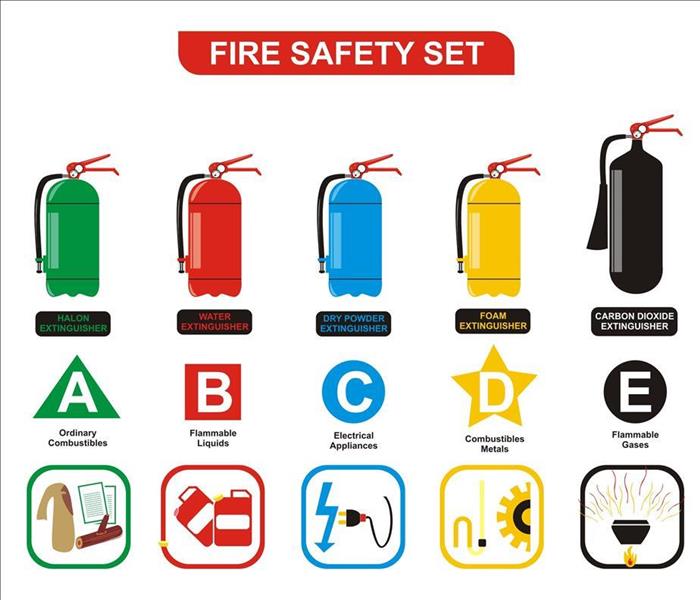 Each fire requires different types of extinguishers and safety procedures.
Each fire requires different types of extinguishers and safety procedures.
The Five Different Classifications Of Fires
A fire can be a dangerous and destructive force of nature. But fires aren't all the same, and each one requires different types of extinguishers and safety procedures to put it out. In this article, we'll discuss the five different classifications of fires: Class A, B, C, D and K. By understanding how each type of fireworks, you can better protect yourself from potential harm while preparing for the worst-case scenario.
Class A fires
As the name suggests, Class A fires are ordinary combustibles such as paper, cloth, wood, and rubber. These are the easiest to extinguish because they are the easiest to see and feel. They can be put out with water or CO2 fire extinguishers.
Class B fires
Class B fires are those that involve combustible materials other than wood, cloth, rubber, and plastics. Examples of Class B fires include:
- Liquids that can form flammable mixtures with air or substances that produce toxic vapors when they burn.
- Gases (other than carbon monoxide) that burn with a color equivalent to the flame produced by a candle of the same diameter in air under normal conditions. Some examples are propane and butane.
- Flammable liquids that produce toxic fumes when burned (for example paint thinner).
Class C fires
A Class C fire is a combustible metal fire. This includes any type of electrical wiring and tools that use wires to start fires, such as soldering irons, arc welders and plasma cutters. The most common fuel for this type of fire is copper wire.
Class D fires
Class D fires are the most dangerous of all and the most difficult to extinguish. They include flammable metals and liquids, such as gasoline, kerosene, diesel fuel and other corrosive liquids. Class D fires must be extinguished with Class D fire extinguishers, which are pressurized to a higher level than other types of fire extinguishers.
The reason these types of fires are so dangerous is because they can rapidly spread across a large surface area; they produce dense black smoke that reduces visibility. They react violently with water, and their vapors may cause suffocation or chemical burns if inhale. It can also be hard for fire fighters to access them due to their location, because they often occur inside enclosed spaces where there isn't enough oxygen available for breathing. And because of the nature of the ignition in Class D fires, these fires are extremely difficult to extinguish and must be treated with the utmost care. Always call in professionals for Class D fires!
Class K fires
Class K fires include:
- Electrical Equipment Fires
- Fuel Gas Fires (including natural gas and propane)
In the end, it’s not about the fire itself. It’s about how you prepare for it. When you know the various classes of fires, you can better prepare yourself and others around you for any possibility.
 When disaster strikes your building it can feel extremely overwhelming. That's why SERVPRO of Downtown Las Vegas is here for the rescue. Call us now!
When disaster strikes your building it can feel extremely overwhelming. That's why SERVPRO of Downtown Las Vegas is here for the rescue. Call us now!





 24/7 Emergency Service
24/7 Emergency Service






